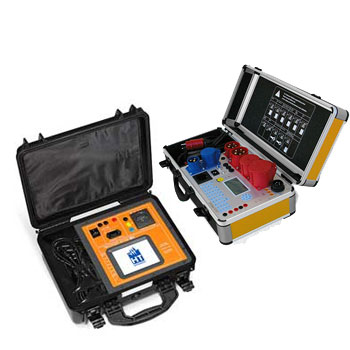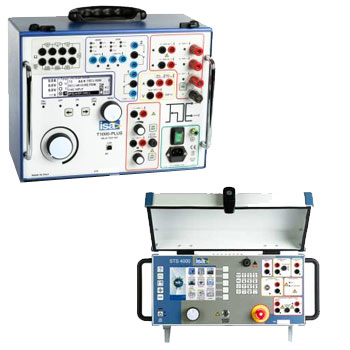- Dead-space free hygienic design with thick-walled sensor tube from stainless steel
- In-line pressure measurement with sensor tube without system fill fluid
- Continuous sensor monitoring of the double-tube system prevents contamination of process and environment
- Suitable for SIP and CIP
- EHEDG-certified and 3-A-compliant

 Datasheet Datasheet |
 User Manual User Manual |
- Characteristic curve deviation: ≤ 0.2%
- Long-term stability: ≤ 0.1% / 12 months
- Measuring range: 0 - 160 mbar to 0 - 40 bar
- Certificates/ Approvals: ATEX

 Datasheet Datasheet
|
 User manual User manual
|
- Process connection with thread for direct threaded connection
- Version with internal diaphragm
- Diaphragm seal parts screwed together
- Universal application
 Datasheet Datasheet |
 User Manual User Manual |
- Quick cleaning, without residue
- Milk thread fitting per DIN 11851
- Suitable for cleaning out of place (COP)
 Datasheet Datasheet |
 User Manual User Manual |
- Quick cleaning, without residue
- Threaded connection per SMS standard (SS 3352)
- Suitable for cleaning out of place (COP)
- Suitable for SIP and CIP
 Datasheet Datasheet |
 User Manual User Manual |
- Quick cleaning, without residue
- Clamp connection easy to open for cleaning and seal replacement
- Suitable for SIP and CIP
 Datasheet Datasheet |
 User Manual User Manual |
- Open flange with internal, all welded diaphragm
- No sealings and clamping elements
- Robust, all welded design
- Compact design
 Datasheet Datasheet |
 User Manual User Manual |
- Flange with a flush welded diaphragm
- Robust, all welded design
- Universal application
 Datasheet Datasheet |
 User Manual User Manual |
- Process connection with thread to provide for direct threaded connection
- Version with internal diaphragm
- Diaphragm seal parts all welded
- Universal application
 Datasheet Datasheet |
 User Manual User Manual |
- Double-diaphragm system prevents contamination of process and environment
- Hygienic process connections in different designs
- Signal transmission and configuration with only one cable per measuring location
- Minimal installation costs, even with retrofitting

 Datasheet Datasheet |
 User Manual User Manual |
especially designed for the food industry, pharmacy and biotechnology and measures vacuum, gauge and absolute pressure of gases, steams and fluids up to 40 bar

 Datenblatt Datenblatt
|

Pressure Sensors with Diaphragm Seals – Reliable Measurement in Demanding Media
Pressure sensors with diaphragm seals (flush, inline, with capillary) isolate the measuring cell from the process medium. A process membrane transfers the pressure via a fill fluid to the transducer. This enables safe measurement of hot, viscous, crystallizing, sticky or aggressive media as well as hygienic applications – including CIP/SIP, high temperatures and hazardous areas. Connection options include Tri-Clamp, Varivent®, DIN/ASME flanges, threads and custom interfaces.
ICS Schneider Messtechnik supports selection & sizing (membrane style, material, fill fluid, capillary length), thermal design (cooling element/siphon), calibration and – on request – IIoT integration (4–20 mA/0–10 V, HART, RS-485/Modbus, IO-Link) up to SCADA/cloud.
FAQ on Pressure Sensors with Diaphragm Seals
Answers on principle, selection criteria, fill fluids, hygiene/Ex, temperature, accuracy, installation and digitalization.
How does a diaphragm seal system work?
A process-facing membrane separates the medium from the sensor. The pressure acts on a fill fluid that transmits it with minimal loss to the measuring cell.
When is a diaphragm seal necessary?
- Hot media/steam, CIP/SIP duties
- Viscous, crystallizing, fibrous or sticky media
- Corrosive/toxic media requiring sensor isolation
- Hygienic service (flush, dead-space-free)
Which membrane styles exist and where do they fit?
| Membrane | Characteristic | Typical Application |
|---|---|---|
| Flush diaphragm | smooth, easy to clean | Hygienic, viscous media |
| Inline cell | direct product contact in the line | Food/pharma, pastes |
| Capillary-remote | sensor mounted away from hot/vibrating points | High temperature/vibration |
| Mini diaphragm | compact, minimal dead space | Tight spots, OEM |
How do I select the right fill fluid?
| Fill Fluid | Temp. Range | Key Property | Use |
|---|---|---|---|
| Silicone oil | wide | universal | General processes |
| USP/white oil | medium | food-grade | Food/pharma |
| High-temp oil | very high | low expansion | Steam/CIP/SIP |
| Fluorinated fluid | high | chemically inert | Highly corrosive media |
| Glycol/water | medium | good heat transfer | HVAC, hygiene |
What accuracy can be achieved with a diaphragm seal?
Sensor accuracy typically ±0.1…0.5% of span. Additional effects from fill fluid, temperature, capillaries and mounting must be considered. Always evaluate the Total Error Band (TEB).
Do capillaries affect response and stability?
Yes. Long capillaries increase volume/temperature sensitivity and may slow response. Keep capillaries as short as practical, shield from sun/heat and secure mechanically.
What process connections are common?
- Tri-Clamp/Varivent® (hygienic, CIP/SIP)
- DIN/ASME flange (robust, large diameters)
- Threads (G/NPT) with flush diaphragm or adapters
Which materials are available?
Membrane/body: 316L (standard), Hastelloy®, Duplex, Monel®, Tantalum or PTFE-lined. Seals: EPDM, FKM, PTFE, FFKM to suit medium/temperature.
How do I protect against high temperatures?
Use a cooling element/siphon, a suitable fill fluid, potentially a remote setup with capillary and thermal shielding. Minimize temperature gradients.
Are hygienic and Ex versions available?
Yes. EHEDG/3-A capable designs for food/pharma and ATEX/IECEx (e.g., Ex ia) for Zone 0/1/2. Ensure the entire chain (connection, seal, fill fluid) is compliant.
What outputs/protocols are offered?
4–20 mA, 0–10 V, optional HART, RS-485/Modbus or IO-Link. In IIoT scenarios, signals can be published via edge gateway using MQTT/HTTPS to SCADA/cloud.
Installation tips for stable measurements
- Mount the diaphragm in a well-flushed, bubble-free position; avoid dead spaces.
- Reduce vibration (brackets, decoupling).
- Protect capillaries from heat/sun, respect bend radius.
- For steam: fill/orient the siphon correctly.
How often should I calibrate?
Recommendation: annually; for QA/safety loops semi-annually/quarterly. Re-check after service/removal. ISO/DAkkS calibration certificates available.
Typical issues & remedies
- Drift/offset: temperature effects → review thermal concept/fill fluid.
- Slow response: long capillary → shorten, heat-shield, use larger diaphragm.
- Fouling/build-up: use flush diaphragm, CIP-capable version, define cleaning cycles.
- Leakage: verify seals/materials, observe tightening torques.
Do you support sizing and commissioning?
Yes—media check, material/membrane selection, fill fluid choice, capillary concept, calibration and integration into PLC/edge/SCADA including documentation.






















































































































































































